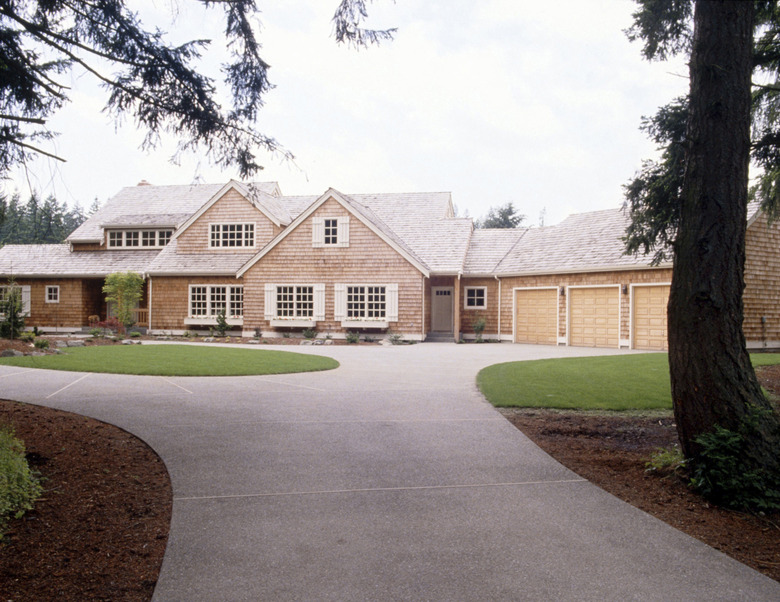What Is The Proper Pitch When Grading A Driveway?
Step 1
If you're installing a driveway on a flat front yard, dig the bottom of the site at a 2 percent pitch. To do this, dig down the site an extra 1/4 inch deeper with every foot of distance away from the garage or home. Use a measuring stick to verify that the dirt floor of the subsoil is 1 inch deeper 4 feet away from the beginning of the driveway.
Maximum Driveway Pitch
Step 1
Steep driveways are dangerous, especially when it rains or snows. If the yard is already on a slope, the steepest point of the pitch should not exceed 15 percent or a decline of 15 feet for every 100 feet of length. The course of the driveway should curve at the steepest section to minimize the pitch. For the portion of the driveway closest to the garage, which receives the most foot traffic, the pitch should be between 2 and 5 percent so it feels relatively flat.
Step 2
- If you're installing a driveway on a flat front yard, dig the bottom of the site at a 2 percent pitch.
- For the portion of the driveway closest to the garage, which receives the most foot traffic, the pitch should be between 2 and 5 percent so it feels relatively flat.
Approach Slopes and Aprons
Step 1
Approach slopes and aprons are the portions of driveway between the street and the rest of the driveway. In urban areas, the approach slope is paved at a 2 percent pitch because this goes over the public sidewalk. Driveway aprons should have an equally shallow pitch or a ramp installed to prevent cars from bottoming out.
Cross Pitch
Step 1
A driveway with a cross pitch is graded down the length of the driveway toward the street, and also across the driveway. The result is a diagonal slope that prevents water from flowing down the length of the driveway, reducing the threat of puddles, ice and damage to the surface. The pitch across the width of the driveway must be 2 to 5 percent so water will drain and the surface will still feel level.
